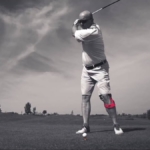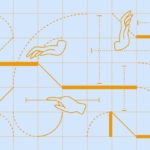Knowledge gaps, time constraints limit use of OA guidelines in primary care
Factors influencing the limited use of core clinical practice guideline recommendations for knee osteoarthritis among general practitioners include knowledge gaps, low confidence and skill deficiencies, time and other constraints, the practitioner’s own perceived role and assumptions regarding patients and their habits, according to data published in BMC Rheumatology.

4 key differences between post-traumatic and non-traumatic knee osteoarthritis for clinical management. La Trobe University, Australia
by Jason Laday, Healio Rheumatology November 28, 2018
“Over the past few decades, research findings have led to some important changes in recommended management of people with osteoarthritis,” Thorlene Egerton PhD MPhil, of the University of Melbourne, Australia, told Healio Rheumatology. “This new approach is now reflected in all recent clinical practice guidelines. However, despite the high prevalence of the disease and the frequency with which primary care doctors encounter it, research also tells us that the care delivered is often inconsistent with this new management approach.”
According to Egerton and colleagues, current clinical practice guidelines recommend diagnosing osteoarthritis using criteria without imaging, and fostering self-management through education, advice on weight management and increasing physical activity.
“It was clear that we needed to know more about the barriers to practice change that specifically applied to primary care medical practitioners and the context,” Egerton said. “Without this knowledge we could not make informed decisions about how to facilitate change and achieve better care for patients.”
To identify the barriers and facilitators influencing the implementation of these recommendations in primary care, Egerton and colleagues conducted semi-structured telephone interviews with 11 general practitioners in Australia. Part of a larger effort, called PARTNER, aimed at increasing the delivery of recommended knee OA management in Australian primary care, the study focused on general practitioners from the Victorian Primary Care Research Network who saw at least one patient with knee OA per month.
All interviews were conducted by a physiotherapist trained in qualitative interviewing, and later transcribed verbatim and checked for accuracy. The transcripts were then reviewed by two researchers, who generated codes and themes using the COM-B model (Capability/Opportunity/Motivation-Behavior) as a framework.
According to Egerton and colleagues, psychological capability themes included knowledge gaps, confidence to effectively manage OA and skills to facilitate lifestyle change. Physical opportunity themes included system-related factors, including time limitations and patient resources. Themes related to social opportunity mainly centered around influences from patients. Reflective motivation themes included the general practitioner’s perceived role and assumptions about patients with knee OA. In addition, automatic motivation themes revolved around optimism, habit and unease in discussing weight.
The researchers also identified several positive influences on general practitioners’ use of clinical recommendations for knee OA, including the benefits of healthy lifestyle changes for all patients, GP optimism and using a patient-centered approach.
“We undertook a comprehensive investigation of barriers and found that there were many intrinsic and extrinsic factors that could explain why change is hard,” Egerton said. “Of particular interest were the insights into how the new management approach challenges identity and habits, and also that there are important system factors that inhibit management of osteoarthritis as a chronic disease. Our greater understanding of why general practitioners do not, or cannot, change enables researchers, health service managers and policy makers to make more informed decisions about how to intervene and help more people with osteoarthritis receive recommended primary care.”
| Egerton reports no relevant financial disclosures. Please see the study for all other authors’ relevant financial disclosures. |
Source Healio Rheumatology
| References |
General practitioners’ views on managing knee osteoarthritis: a thematic analysis of factors influencing clinical practice guideline implementation in primary care, Thorlene Egerton, Rachel K Nelligan, Jenny Setchell, Lou Atkins and Kim L Bennell. BMC Rheumatology. 20182:30
Effectiveness of a new model of primary care management on knee pain and function in patients with knee osteoarthritis: Protocol for THE PARTNER STUDY, Hunter DJ, Hinman RS, Bowden JL, Egerton T, Briggs AM, Bunker SJ, Kasza J, Forbes AB, French SD, Pirotta M, Schofield DJ, Zwar NA, Bennell K; PARTNER Study Team. Shuck K, Marshall C, King M, Wood A. Collaborators. BMC Musculoskelet Disord. 2018 Apr 30;19(1):132. doi: 10.1186/s12891-018-2048-0.
Barriers Impeding the Use of Non-pharmacological, Non-surgical Care in Hip and Knee Osteoarthritis: The Views of General Practitioners, Physical Therapists, and Medical Specialists, Selten EMH, Vriezekolk JE, Nijhof MW, Schers HJ, van der Meulen-Dilling RG, van der Laan WH, Geenen R, van den Ende CHM. J Clin Rheumatol. 2017 Dec;23(8):405-410. doi: 10.1097/RHU.0000000000000562.
Patient reported barriers and facilitators to using a self-management booklet for hip and knee osteoarthritis in primary care: results of a qualitative interview study, Cuperus N, Smink AJ, Bierma-Zeinstra SM, Dekker J, Schers HJ, de Boer F, van den Ende CH, Vliet Vlieland TP. BMC Fam Pract. 2013 Dec 1;14:181. doi: 10.1186/1471-2296-14-181.
OARSI recommendations for the management of hip and knee osteoarthritis, part I: critical appraisal of existing treatment guidelines and systematic review of current research evidence, Zhang W, Moskowitz RW, Nuki G, Abramson S, Altman RD, Arden N, Bierma-Zeinstra S, Brandt KD, Croft P, Doherty M, Dougados M, Hochberg M, Hunter DJ, Kwoh K, Lohmander LS, Tugwell P. Osteoarthritis Cartilage. 2007 Sep;15(9):981-1000. Epub 2007 Aug 27. Review.
OARSI recommendations for the management of hip and knee osteoarthritis, Part II: OARSI evidence-based, expert consensus guidelines, Zhang W, Moskowitz RW, Nuki G, Abramson S, Altman RD, Arden N, Bierma-Zeinstra S, Brandt KD, Croft P, Doherty M, Dougados M, Hochberg M, Hunter DJ, Kwoh K, Lohmander LS, Tugwell P. Osteoarthritis Cartilage. 2008 Feb;16(2):137-62. doi: 10.1016/j.joca.2007.12.013. Review.
OARSI recommendations for the management of hip and knee osteoarthritis: part III: Changes in evidence following systematic cumulative update of research published through January 2009, Zhang W, Nuki G, Moskowitz RW, Abramson S, Altman RD, Arden NK, Bierma-Zeinstra S, Brandt KD, Croft P, Doherty M, Dougados M, Hochberg M, Hunter DJ, Kwoh K, Lohmander LS, Tugwell P. Osteoarthritis Cartilage. 2010 Apr;18(4):476-99. doi: 10.1016/j.joca.2010.01.013. Epub 2010 Feb 11. Review.
OARSI guidelines for the non-surgical management of knee osteoarthritis, McAlindon TE, Bannuru RR, Sullivan MC, Arden NK, Berenbaum F, Bierma-Zeinstra SM, Hawker GA, Henrotin Y, Hunter DJ, Kawaguchi H, Kwoh K, Lohmander S, Rannou F, Roos EM, Underwood M. Osteoarthritis Cartilage. 2014 Mar;22(3):363-88. doi: 10.1016/j.joca.2014.01.003. Epub 2014 Jan 24.
Also see
Non-pharmacological education needed for hip, knee OA care Healio
Pain phenotypes can help predict persistent knee pain in OA Healio
Etarfolatide imaging may help identify FR-positive OA phenotype Healio
AAOS releases new clinical practice guideline for treatment of hip OA Healio






